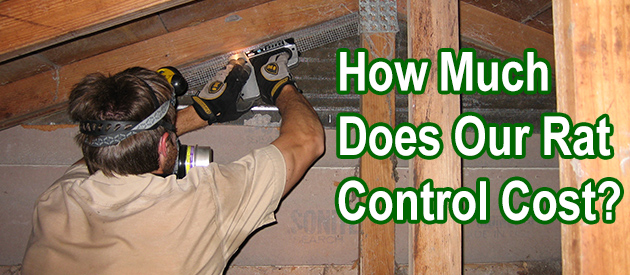Suffolk County, Boston Rat Control Situation:
Halo David, I`ve checked your website. Thanks for sounding very sensible! I`m desperate here - I moved near Boston MA nearly a year ago and i`m sharing with a friend, an old cottage = mice, and sheds = rats. At the moment there is a bit of scratching in the house, now and again, but no chewing marks or droppings in the kitchen, although I leave a packet of biscuits available deliberately - to find out if we have a visitor ( and we caught 6mice last winter.) And the mouse traps are set and empty. Having said so there are in-between the walls cavities where the mice are not accessible.. The HUGE problem, though, are the sheds and the messy yard - just perfect for rats. I`m desperate, I`ve just spent most of the day de-cluttering one of them, which made me sick - the mess, the stench and the rat droppings... I`ve no clue how to deal with the problem. I have two dogs, so any kind of poison is out of the question. I am going to tidy this place, but I`m on a low budget so I must rely on myself which will take time. Nevertheless, the main issue is: IF i get rid of the rats, what to do NOT to get them back?! there are fields (cultivated for crops), hedges, walls, nooks and corners everywhere.. One of the sheds is new, wooden and on the concrete floor but i must rat-proof it and I don`t know how. The other one should be demolished but it belongs to my mate, and he needs it so all I can do is to help keep it neat. David, drop me a line, please, any kind of support will be a bonus after my today`s "adventures"... Kind regards, maya
My response: You've already done a good job by starting to clear out the clutter. But to keep them out of the cottage, you've got to find and seal the entry holes shut. Don't worry about how many rats and mice are outside. Inspect the house and find out how the rodents are getting inside. Seal up every single last entry/exit hole and gap with steel. Trap, properly trap on rat runways, ALL the rats, and remove them from the house. Clean up the attic space or home once they are all gone for good.
Boston Rat Control Tip of The Week
Is One Rat A Sign That There Are More Present?
Rats are animals that tend to move around in groups, they are not solitary animals. For this reason, if you see a rat in your home, it is a sign that there are more rodents present. It is imperative that you start radical extermination as soon as possible, avoiding their reproduction.
In addition to traveling in groups, they have a very rapid reproduction capacity, especially if they find a comfortable place in your home.
How To Know If There Are Rats In Your House?
If you have seen or heard a rat in your home, there are probably more hidden in the most unexpected corners of your house. There are many ways you can tell if there are rodents in your home, even if you don't see them. For example:
Unusual Sounds: Rats are noisy animals; they can make noise at night, or even during the day. Whenever they bump into things, chew on objects or food, and move from one side of the house to the other, you will hear them
Nibbled Food And Objects: The best sign that there are rats in your house is if you find nibbled objects, such as clothes, shoes, or bags. Similarly, finding food packaging with holes or even foods with bites is a sign of rodents in the house.
Droppings And Urine: Rats will usually leave them anywhere in the house. It is important to be aware of any sighting of excrement, which can be quite small (the size of a grain of rice).
Where Do These Rodents Usually Hide?
Rats will always look for a place that provides them with safety and food. They usually hide in small spaces, as it is easier for them to move from one place to another. They will probably decide to stay in a place close to the kitchen so that it is easier to go out in search of food for their pups.
In short, seeing a rat is a sign that more are present and hidden. Don't wait a minute to take action in this situation! The last thing you want is a plague of rats living inside the walls of your home.


